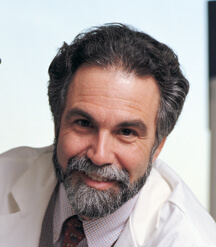-
About
- Health
-
Patient Care
I Want To...
-
Research
I Want To...
Find Research Faculty
Enter the last name, specialty or keyword for your search below.
-
School of Medicine
I Want to...
Johns Hopkins Researcher Awarded Prestigious Wiley Prize In Biomedical Sciences - 02/04/2014
Johns Hopkins Researcher Awarded Prestigious Wiley Prize In Biomedical Sciences
Release Date: February 4, 2014

Gregg Semenza
The 13th annual Wiley Prize in Biomedical Sciences was awarded to Gregg Semenza, M.D., Ph.D., for his contribution to discovering how cells sense and respond to low oxygen conditions. Semenza will share the award with three other co-recipients: William G. Kaelin Jr., M.D., of the Dana-Farber Cancer Institute; Sir Peter Ratcliffe, M.D., F.R.S., of Oxford University; and Steven McKnight, Ph.D., of the University of Texas Southwestern Medical Center.
The Wiley Foundation awards this prize in recognition of breakthroughs in the understanding of biology with an emphasis on findings that contribute to a new field of research or clinical application. The award, which is presented annually, consists of a $35,000 shared prize and a luncheon in honor of the recipients. The award will be presented on April 11 at The Rockefeller University in New York City, where the recipients will deliver a lecture on their research accomplishments.
Semenza, the C. Michael Armstrong Professor of Medicine and director of the Vascular Biology Program at the Institute for Cell Engineering, discovered and characterized hypoxia-inducible factor 1 alpha, or HIF-1alpha, a gene that encodes a protein that senses oxygen levels in cells. In 1995, Semenza identified the gene and has since discovered major roles for HIF proteins in development and homeostasis. He demonstrated that HIFs serve as master regulators of the cellular oxygen response by turning on genes that help cells adapt to changes in oxygen levels. Semenza’s team has since been at the forefront of translational studies to enhance HIF activity for conditions that require increased oxygen and blood flow, including cardiovascular diseases, wound healing and organ transplantation, as well as those that inhibit HIF activity to decrease oxygen and blood flow to treat cancer, ocular neovascularization and pulmonary hypertension.
For the Media
Media Contacts:
Vanessa McMains; 410-502-9410; [email protected]
Catherine Kolf; 443-287-2251; [email protected]



